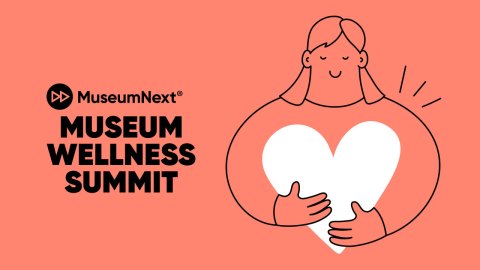
This visual Data Story is based on findings from the 2025 Annual Survey of Museum-Goers, a national survey of American museum visitors from AAM and Wilkening Consulting. Every year, the survey partners with individual museums to research their audiences and yield insights about their behaviors and preferences, both on an institutional and national level. (Learn more about the purpose and methodology of the survey here.) Interested in joining the 2026 edition? Sign up by December 1 to unlock a special early bird rate!

Before the COVID-19 pandemic, we started noticing a trend. A few respondents, primarily mothers of minor children, were indicating home was no longer a great place for family time. For example, these two respondents from the 2019 Annual Survey of Museum-Goers:
“Quality family time together. We all get to learn new things together without getting distracted by daily mundane chores at home.”
“The real tangible history, science, or art. Pulls you out of your head and into the ‘real’ world for amazing quality family time. Detaching from devices.”
Very interesting, we thought. This articulation that home was not working for family time indicates a big shift in how families (and perhaps people generally) engage with each other in domestic spaces. But while museums have long been considered a great place for connecting with those we care about, respondents were now saying this was a quality of museums that set it apart from other places. That was new.
We speculated that this shift wasn’t limited to families with minor children, but something broader. Clearly this had to be a theme in the Annual Survey of Museum-Goers!
Then the pandemic hit. We put it on the backburner, kept an eye on it, and waited to see if that sentiment would reemerge.
Sure enough, a few years later, the sentiment reappeared in the data. It was time.
To suss out what was going on, we started by stepping back and considering what people were actually saying. That is, we wanted to separate out and understand:
- The barriers people face when planning social time with those they care about
- The kinds of places that feel supportive of social time
- What makes those places actually “work”
- And what it is about museums specifically that helps foster social connection
Our line of inquiry also sorted out people who prefer to visit museums on their own. We’ll share their thoughts on how museums can better support solo visitors in an upcoming Data Story.
The first question we posed focused on places for social time. We asked:
What are your favorite places or activities for spending time with family and friends? That is, the places where you can share experiences and connect with each other? (Choose those that are most important to you.)
Our list of responses included museums … but respondents knew they were taking a museum survey, and we believe that influenced their response, skewing the “museum” response artificially high. For that reason, the museum responses are not included below.
| FREQUENT | CASUAL (at least one museum visit in the past year) | SPORADIC (Visits museums occasionally, but not in the past year) | NON-VISITOR (“Never” visits) | |
| Vacations/trips | 63% | $62$ | $49$ | $34$ |
| Concerts, plays, and other live performances | 58% | $42$ | $25$ | $14$ |
| Amusement and/or water parks | 13% | $37$ | $27$ | $17$ |
| Sports activities and events | 27% | $37$ | $28$ | $20$ |
| House of worship | 19% | $25$ | $21$ | $18$ |
| Home | 51% | $54$ | $54$ | $64$ |
| Outdoors (parks, walks, hiking, etc.) | 71% | $57$ | $46$ | $34$ |
| Shopping destinations (malls, shopping centers, shopping districts, etc.) | 15% | $35$ | $28$ | $22$ |
| Community spaces (libraries, farmers markets, community centers) | $45$ | $38$ | $25$ | $12$ |
| Restaurants | $64$ | $62$ | $54$ | $51$ |
| None of these | $0$ | $0$ | $2$ | $10$ |
Frequent visitor respondents sourced via museum communications lists; casual, sporadic, and non-visitor respondents sourced via broader population sample of U.S. adults
As we look at these results, we should first consider these places and activities as not just competition, but also opportunity. That is, some of these places and activities are natural extensions of museum experiences, giving us more ways to talk about museums as places of social connection. Partnerships may also prove fruitful for extending and amplifying the experiences of individual museums.
Let’s also take a look at how we broke down the results, as there were some pretty big differences based on frequency of museum visitation.
“Frequent” museum-goers were much more likely to say vacations, performing arts, outdoors, and community spaces were great for social experiences … but they were far less likely to choose other activities (and the least likely to choose home).
“Casual” museum-goers, who have visited at least one museum in the past year, chose a pretty wide variety of things, indicating these households are a bit more omnivorous overall in their leisure pursuits.
“Sporadic” museum-goers, who are open to an occasional museum visit (but had not visited a museum in the past year) fell in the middle on most things.
And “non-visitors” to museums were the least enthusiastic about virtually all of the options given … but the most likely to choose “home.”
These patterns fit into larger patterns we’ve seen for years. Frequent museum-goers tend to be more affluent and educated, and are more avid cultural consumers. They also are more likely to be older adults who are not as enthusiastic about a trip out to the water park or shopping.
And casual visitors to museums skew younger and more likely to be parents and guardians of minor children. Hence greater interest in amusement parks and sports activities as well as higher rates for many of the other places/activities than sporadic or non-visitors to museums.
And at the other extreme, people who “never” visit museums tend not to engage in other activities either. We weren’t surprised to see far lower responses for most of these places and activities.
Let’s also talk about politics and the politicization of place. Or rather, the lack thereof.
There were few differences in responses by political values. For the most part, across the political spectrum, relatively equal percentages chose most of the places and activities we provided. This indicates that, in public places, we are all mixing fairly regularly with a variety of people with diverse political values reflective of our communities.
Is this true for all things on our list? Mostly, though liberals were slightly more likely to choose performing arts and conservatives were more likely to choose a house of worship.
But overall, public spaces, including museums, are not as political as the prevailing national narrative suggests.
You’re going to be hearing that quite a bit from us in the coming months, as this year’s research repeatedly indicates that the prevailing national narrative of extreme division doesn’t reflect the values and experiences of most Americans.
Annual Survey of Museum-Goers Data Stories are created by Wilkening Consulting on behalf of the American Alliance of Museums. Sources include:
- 2025 Annual Survey of Museum-Goers, n = 98,904; 202 museums participating
- 2025 Broader Population Sampling, n = 2,079
- 2017 – 2024 Annual Surveys of Museum-Goers
Data Stories share research about both frequent museum-goers (typically visit multiple museums each year) and the broader population (including casual, sporadic, and non-visitors to museums). See the Purpose and Methodology (Update) Data Story from September 11, 2025 for more information on methodology.
More Data Stories can be found at https://wilkeningconsulting.com/data-stories/.
© 2025 Wilkening Consulting, LLC








